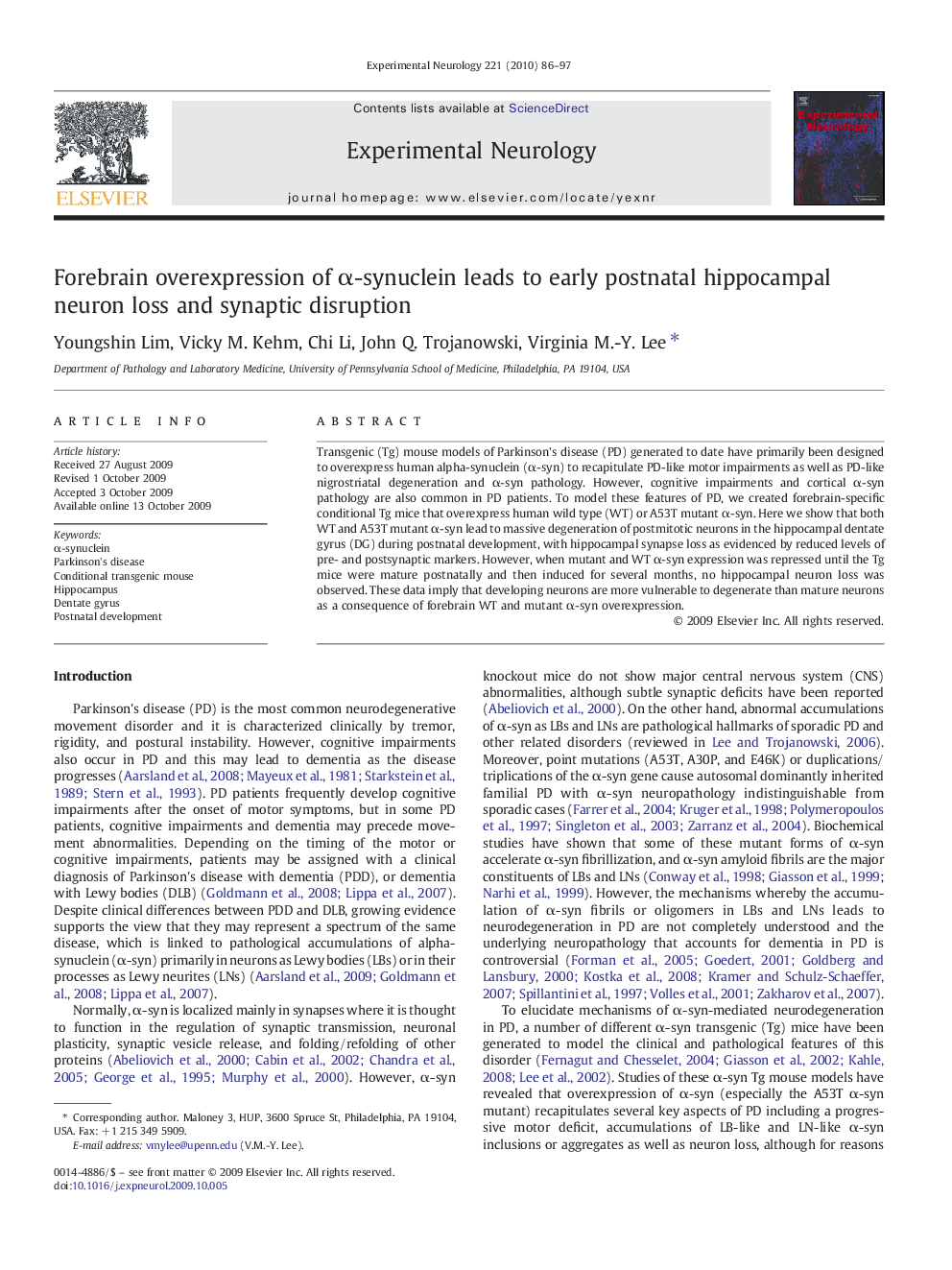| Article ID | Journal | Published Year | Pages | File Type |
|---|---|---|---|---|
| 3056021 | Experimental Neurology | 2010 | 12 Pages |
Transgenic (Tg) mouse models of Parkinson's disease (PD) generated to date have primarily been designed to overexpress human alpha-synuclein (α-syn) to recapitulate PD-like motor impairments as well as PD-like nigrostriatal degeneration and α-syn pathology. However, cognitive impairments and cortical α-syn pathology are also common in PD patients. To model these features of PD, we created forebrain-specific conditional Tg mice that overexpress human wild type (WT) or A53T mutant α-syn. Here we show that both WT and A53T mutant α-syn lead to massive degeneration of postmitotic neurons in the hippocampal dentate gyrus (DG) during postnatal development, with hippocampal synapse loss as evidenced by reduced levels of pre- and postsynaptic markers. However, when mutant and WT α-syn expression was repressed until the Tg mice were mature postnatally and then induced for several months, no hippocampal neuron loss was observed. These data imply that developing neurons are more vulnerable to degenerate than mature neurons as a consequence of forebrain WT and mutant α-syn overexpression.
